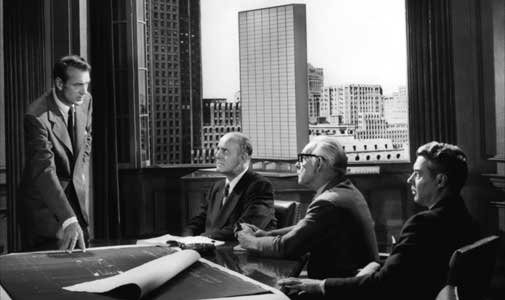
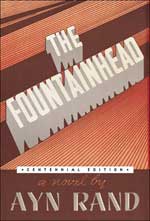 The Fountainhead, the 1949 film adaptation of Ayn Rand's 1943 novel about modern architecture on trial, is televised tonight at 9 ET by TCM. At one time, it was every architecture student's introduction to the profession -- and moral compass, and crack-cocaine equivalent.
The Fountainhead, the 1949 film adaptation of Ayn Rand's 1943 novel about modern architecture on trial, is televised tonight at 9 ET by TCM. At one time, it was every architecture student's introduction to the profession -- and moral compass, and crack-cocaine equivalent.
Principled protagonist Howard Roark, played in the movie by Gary Cooper, swelled the heads of most impressionable college students beyond all recognition -- and, in many, set standards so impossibly high, he generally doomed generations of career architects to therapists' offices within 10 years. (Not that I have any personal knowledge of that...)
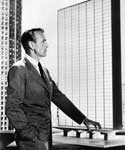
OK, perhaps that's a bit dramatic. But so was The Fountainhead. Rand's right-ish creed of "objectivism" -- a concoction of heroic individualism, unbridled capitalism and free will -- is in full force here. It's a drama about a New York architect with little means, toiling in obscurity, but remaining hard and true to his artistic vision of the modern future, no matter the consequences, battling with owners, financiers, and the public.
The film follows Roark through his struggles in post-war New York, where he must make hard choices of remaining honest to his work or giving it all up. It's up to the visionary to find like-minded clients who see the value of remaking of the city through architectural modernism.
The stuff of superheroes -- if they wore white shirts and carried a T-square. But for its time, Rand's The Fountainhead was perhaps the first to feature a lone artist pitted against the mediocrity of popular taste -- before many films such as those to follow about Van Gogh, Rodin and Camille Claudel.
True to mid-century melodrama, Roark is forced into drastic action to save his architectural creations -- and his integrity. He must then face judge and jury, where he, as his own lawyer, gives one of the great courtroom speeches on film. (And I write that having seen a LOT of courtroom speeches on film.)
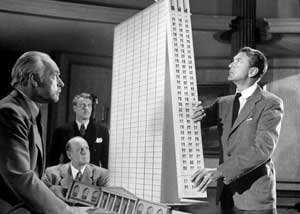
For architecture students, the special treats here are the architectural renderings of Roark's works -- wonderful ink drawings of modern dynamism as envisioned by Hollywood artists, shown just for a few seconds here and there, but very much conveying the mood of Roark's supposedly unique vision. Gorgeous scale models, too.
Rand, a devotee of Frank Lloyd Wright (he designed a house for her, never built), modeled the brash architect after him, finding his arrogance, talent and self-aggrandizing the perfect frame around which to wrap the Roark character.
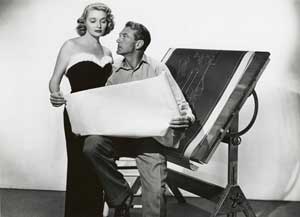
The Fountainhead was shot in very compelling, oftentimes moody black-and-white, where the buildings soar and take center stage as characters of their own. and features great performances by Raymond Massey and Patricia Neal. She was 22 at the time, and reportedly immediately became involved with Cooper once filming started, making their on-screen heat no small acting accident.
It's all here: unapologetic personal gain, artistic passion, romance and selfless sacrifice... hot off the drawing board in the drafting room.